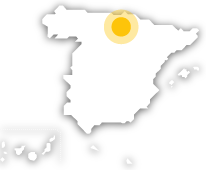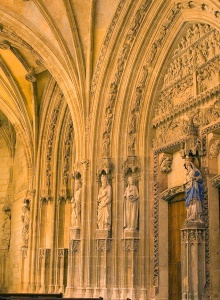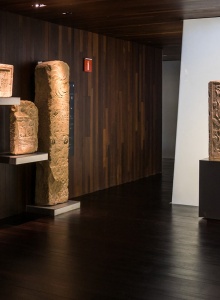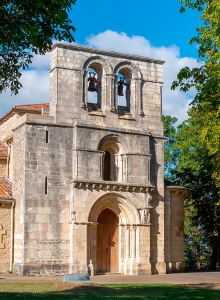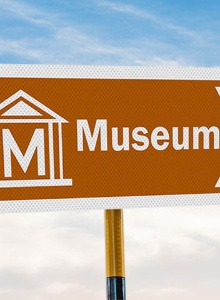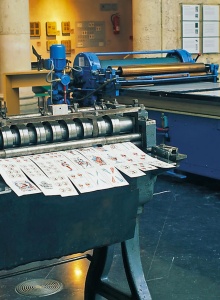Founded at the end of the 12th century, present-day Vitoria-Gasteiz is a city of exemplary urban design.
The Basque capital preserves a medieval quarter with lots of traditional architecture, such as Plaza de la Virgen Blanca or historic buildings like the cathedral of Santa María. From here, the city unfolds into the Romantic new suburbs, a network of wide avenues, gardens and buildings that are a reminder of the grandeur and stateliness of Vitoria.
From here, the city unfolds into the Romantic new suburbs, a network of wide avenues, gardens and buildings that are a reminder of the grandeur and stateliness of Vitoria.Vitoria also offers a jam-packed programme of cultural activities, as evidenced year after year by one of its most renowned events, the Jazz Festival. The city's traditional cuisine will not disappoint either, based around local produce and always washed down with unique Basque wines.Present-day Vitoria was founded in 1181 on a small hill by Navarrese king Sancho VI under the name of Nueva Victoria. In 1200 this fortified town went to the Castilian monarch Alfonso VIII. Soon, a flourishing vocation for crafts began to emerge in the town. In the 15th century, Juan II of Castile granted Vitoria the title of city. Through the 18th and 19th centuries, the expansion of the city into the new suburbs took place.The Basque capital reveals a medieval quarter where you will stumble across the most charming little corners, gardens and tree-lined boulevards, which make the capital of Alava a remarkable green space that does not disturb the careful urban layout, where medieval streets harmoniously intermingle with Renaissance palaces and Neoclassical churches. The heart of the city is the Plaza de la Virgen Blanca, presided over by the monument that celebrates the battle of Vitoria. It is also the site of the church of San Miguel, featuring the image of the White Virgin, the city's patron saint. The current building dates from between the 14th and 16th centuries, as evidenced by the mixture of Gothic and Renaissance elements. The church has a rectangular floor-plan, with three naves crowned with flamboyant Gothic ribs and a high reredos, made by Gregorio Fernández.The Gothic portico of San Miguel leads to Los Arquillos, an arcaded walk that connects the old town with the nineteenth-century suburbs. We are in front of the church of San Vicente and the Palace of Villa Suso ( XVI), located in the Plaza del Machete, where city-council officials were traditionally sworn in.The cathedral of Santa María, also known as the Old Cathedral, is a magnificent Gothic temple which was begun in the 13th century and continued into the 14th. It was later remodelled as the city grew. In 1496, the church became a collegiate church, until finally, in 1861, it achieved the rank of cathedral. The building, declared a Historic-Artistic Monument, gives the impression of soaring verticality and has a pronounced Latin cross floor-plan, crowned with cross vaults and an ambulatory. From the outside, you can see the monumental sculptures of the fourteenth-century main front, featuring a sculpture in the central front devoted to the Virgin, one in the left front dedicated to San Gil, while the right front depicts the Last Judgement and Saint James the Apostle.The city's oldest streets surround the cathedral, as revealed by their guild names: “Cuchillería” (Cutlers), “Herrería” (Blacksmiths), “Correría” (Couriers), and others. On a stroll around this area, you will see some of the most significant Renaissance palaces in the capital city. On Herrería street you will find the Escoriaza-Esquibel palace, with its lovely plateresque courtyard, as well as the Urbina Zárate palace. On Correría street, you will see the Portalón (Large Doorway), the House of Maturana-Verástegui and the Tower of Anda. Finally, on Cuchillería, you will find the Palace of Bendaña (16th century) and Casa del Cordón, declared a Historic-Artistic Monument. This old trading house from the Low Middle Ages (built in the 15th century) has a Gothic façade with two pointed arches. Before leaving the old quarter, you can admire the Palace of Floral de Álava, home to the City Council and built in the 19th century, and the slender Tower of Doña Otxanda, the present site of the Natural Science Museum. This fortified structure, built in the 15th century on top of an older one, was commissioned by Andrés Martínez de Iruña and Catalina de Álava.El Ensanche (The New Suburbs)Around the old town, Rationalist Vitoria -the Vitoria of the nineteenth-century expansion- unfolds. In the new suburbs that arose as a consequence of this expansion, you find Plaza de los Fueros, designed in the eighties by the prestigious Basque artist Eduardo Chillida. Further ahead you will find the cathedral of María Inmaculada also known as the New Cathedral, built in the early 20th century, following a Neogothic style. Next to the temple, you will see the Basque Parliament ( 19th century), the site of the present autonomous parliament.Both buildings flank the gates to the central Florida park, one of the most emblematic in the city. It was built back in 1820 and is remarkable for the wide variety of plant species that it houses. Other green spaces found in the capital include Judizmendi park, situated on top of an old Jewish cemetery, and the San Juan de Arriaga Park, the largest in the city. Among the many small palaces in this Romantic city, it is well worth stopping at the Augusti Palace, home to the Museum of Fine Arts. This eclectic building, built in 1912, has been declared a historic and artistic monument. The Palace of Ajuria Enea, also from the beginning of the century, is a clear example of Basque stately architecture and it is presently the site of the Basque Government.Green CityThe city has received awards for its commitment to sustainability and conservation, including European Green Capital 2012 and Global Green City 2019.In fact, Vitoria-Gasteiz has 42 square meters of green areas per person, with more than 170 kilometres of bike lanes, over 115,000 trees lining its streets and city parks and 100-year-old trails such as the Paseo de la Senda.Culture, gastronomy and outskirtsVitoria offers a jam-packed programme of cultural activities. Its long musical tradition is embodied in the Vitoria Jazz Festival. Each year in July, internationally acclaimed musicians bring the most varied styles to the Basque capital, livening up the streets of Vitoria for a week. It is the perfect excuse to come and discover the charm of the capital of Alava.The Parador de Argómaniz, a majestic Renaissance palace, is located only 12 kilometres away from Vitoria-Gasteiz. There you can sample some of the most typical dishes of the region, such as perretxikos (a kind of mushroom), snails in a sauce and goxua (a sponge cake with cream and caramel). Vitoria-style beans (habas a la vitoriana), vegetable stew (menestra de verduras), fried peppers (fritada de pimientos) and white haricot bean stew (alubias pochas) are some of the specialities that make up this rich, traditional cuisine. The region of Rioja Alavesa produces excellent wines, which are included in the Rioja Designation of Origin.The St James Way has left a mark on the province's artistic heritage. The Zalduondo country house, home to the Ethnographic Museum, is the first stop on the St James' Way route in Alavan territory. In this town you can admire the Lazarraga Renaissance palace and the parish church. In the vicinity of Eguilaz stands the Dolmen of Aizkomendi, one of the megalithic compounds of the Basque Country. The journey continues to Salvatierra, a medieval town with remains of the old wall and large Renaissance houses. Make sure you visit the churches of San Juan and Santa María. Upon reaching Alegría and Vitoria-Gasteiz, the path continues to Domingo de la Calzada, in the Rioja territory.The natural heritage of Álava is tremendously diverse. This is evidenced by the amount of protected spaces, including the Valderejo nature reserve, to the west of the province, the Izki nature reserve, which is home to one of the most extensive melojo-oak forests, and the Área de Gorbeia nature reserve, located at the boundary between Alava and Biscay, considered to be one of the biggest natural tourist attractions in the Basque Country.

